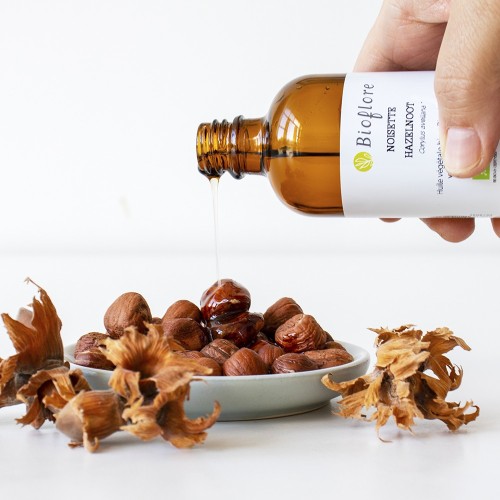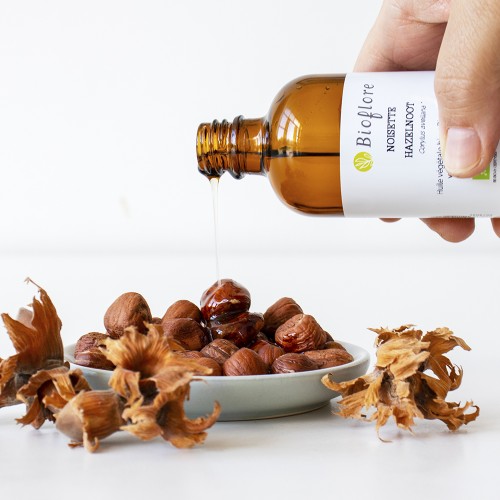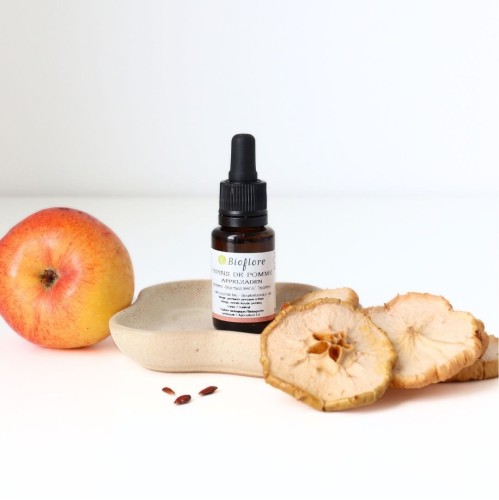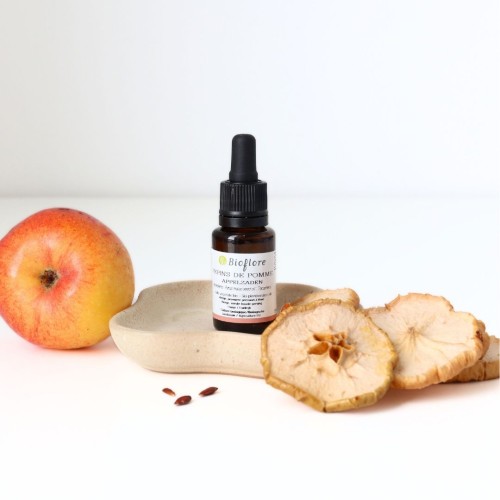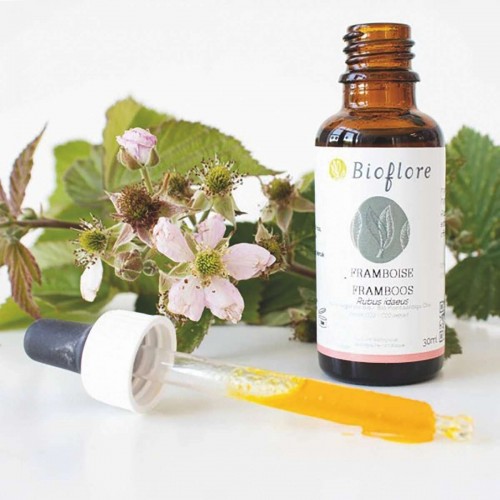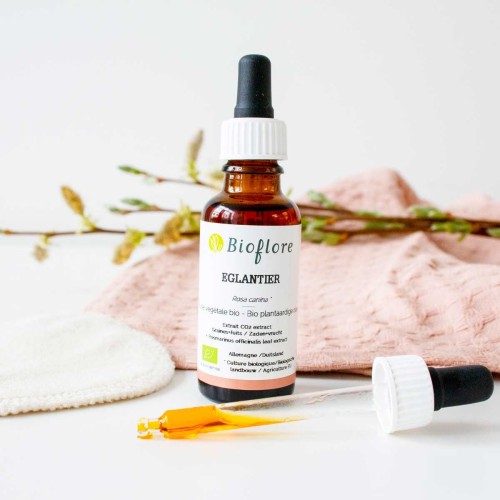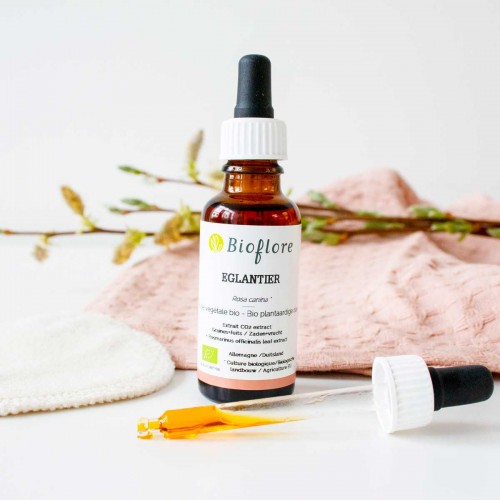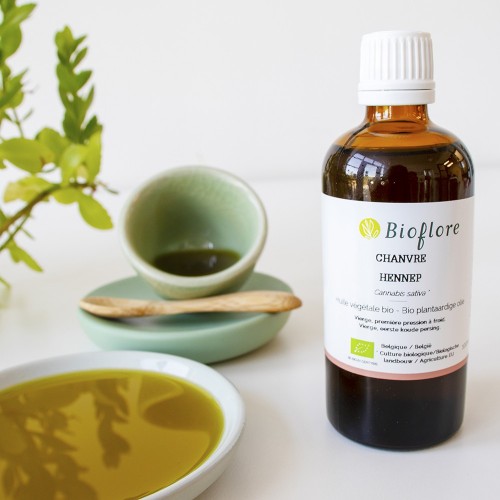As sources of vitamins and essential fatty acids, vegetal oils are real treasures for the skin and essential for natural skin care.
However, there are still many questions surrounding the use of vegetal oils on the face.
Can you apply a vegetal oil to oily skin? (The answer is yes!)
Is my vegetal oil comedogenic?
Which vegetal oil is safe to use on acne-prone skin?
We answer your most frequently asked questions by providing the comedogenic index for each vegetable oil and advice on choosing the best vegetable oil for your skin type.
What are comedogenic products?
When we talk about a comedogenic oil, we are referring to its susceptibility to the appearance of blackheads, whether blackheads or closed comedones (red or white pimples).
Mineral oils, comedogenic oils
In traditional cosmetics (which we don't really like and which are based on petrochemicals rather than plants), mineral oils are known to be comedogenic. These mineral oils are in no way crystal oils or other friendly minerals; they are synthetic oils derived from petroleum that can be found in product compositions under the sweet names of: Paraffinum liquidum, Petrolatum, Cera Microcristallina, Mineral Oil, and other poetic names ending in -methicone or -siloxane.
These oils are still widely used in traditional cosmetics. They are not harmful to the skin, but they do not provide any active ingredients, nutrients or vitamins to the epidermis, just a film-forming and protective effect that prevents dehydration but stops as soon as you stop applying them. Highly occlusive, these mineral oils are also comedogenic and encourage the appearance of imperfections.
Non-biodegradable, they are harmful to ecosystems once rinsed and their extraction method is often highly polluting. These mineral oils are not authorised by organic labels (thank goodness!).
Are vegetal oils comedogenic?
In an attempt to assess the susceptibility of vegetal oils to causing blemishes, they have been classified by comedogenicity index. This comedogenicity index ranges from 0 (not at all comedogenic) to 5 (very comedogenic).
How is this comedogenic index calculated? Several criteria are taken into account:
- The oxidative potential of the oil. The more sensitive it is to oxidation, the more comedogenic it will be.
- Its ability to penetrate the skin
- Analysis of the oil's freshness
This comedogenic index is not an exact science, but it does provide an easy way of classifying which oil is best suited to your skin type. Bear in mind too that every skin is different and will not react in the same way to a particular oil.
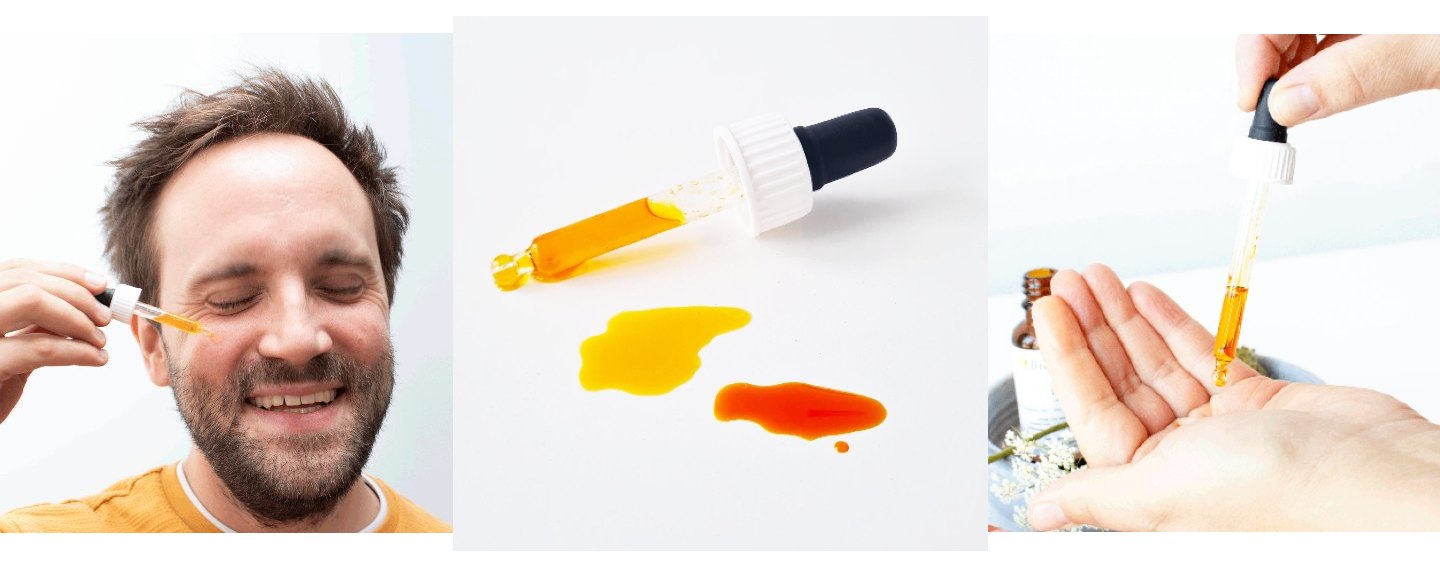
Which index for which skin type?
Index 0
These vegetal oils are considered to be non-comedogenic and non-occlusive for the skin's pores. They are particularly suitable for oily and acne-prone skin, as well as combination skin. They are often fine oils that penetrate the skin quickly and do not leave a greasy film.
Index 1
These vegetal oils are non-comedogenic in the vast majority of cases and do not clog the skin's pores.
Index 2
These vegetal oils are considered to be very non-comedogenic, but can sometimes cause pimples on oily or acne-prone skin.
Index 3
These oils are considered comedogenic for skin prone to imperfections. There is little risk of pimples appearing if you have normal or dry skin.
Index 4
These oils are considered to be comedogenic for the vast majority of skin types, particularly on the face.
Index 5
Oils considered to be highly comedogenic on the face.
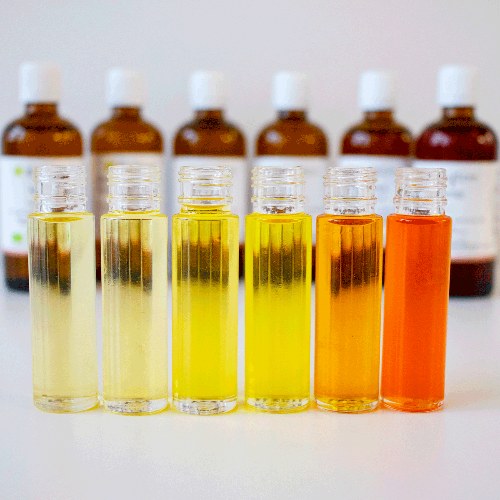
Comedogenicity indices for vegetal oils
Index 0 - non-comedogenic, non-occlusive for pores
- Jojoba vegetal oil
- Hazelnut vegetal oil
- Sunflower vegetal oil
- Camelina oil
- Avocado oil
- Rice bran oil (CO2 extract)
- Bioflore Organic Cleansing Fluid
Index 1 - Not or rarely comedogenic
- Grapeseed vegetal oil
- Pomegranate vegetal oil
- Rosehip vegetal oil (C02 extract)
- Raspberry seed vegetal oil
- Macadamia vegetal oil
- Argan vegetal oil
- Hemp oil
- Calendula macerate
- Carrot macerate
- Sesame oil
- Prickly pear oil
- Nigella Oil
- Castor oil
- Tiger Nut Oil
- Neem oil
- Calophylla oil
- Lavender macerate
- Vanilla macerate
- Bioflore Spring Face Oil
- Bioflore Autumn Face Oil
- Bioflore Summer Face Oil
- Bioflore Regenerating Fluid
- Bioflore Illuminating Fluid
Index 2 - Low comedogenic
- Apricot vegetal oil
- Sweet almond vegetal oil
- Plum vegetal oil
- Organic Sea Buckthorn vegetal oil (CO2 extract)
- Borage vegetal oil
- Cherry oil
- Apple seed oil
- Evening Primrose Oil
- Arnica macerate
- St John's Wort macerate
- Bioflore Winter Face Oil
- Bioflore Soothing Fluid
Index 3 - Fairly comedogenic
- Rosehip vegetal oil
Index 4 - Highly comedogenic
- Coconut Vegetal Oil
- Linseed oil
Index 5 - Highly comedogenic
- Wheatgerm vegetal oil
Do you have oily skin or skin prone to imperfections?
Choose a 0 or 1 index oil such as Hazelnut, Jojoba, Nigella...
Do you have combination skin?
Choose an oil with a comedogenic index of 0 to 2.
Do you have normal skin?
You have a wide choice of vegetal oils! Choose a vegetal oil with a comedogenic index of 0 to 3. You can opt for an oil with a "finer" texture in summer and spring (Hazelnut, Rosehip, Apple) and a richer oil in autumn and winter (Plum, Evening Primrose, Borage).
Do you have dry to very dry skin?
All vegetal oils are suitable for you! Opt for rich-textured oils such as Evening Primrose, Plum, Rosehip, etc.



